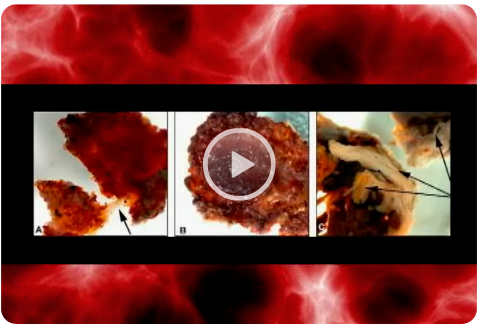- Home
- T.R.U.T.H. About?
- The Past (Beginning)
- Dinosaurs
- The Present (Middle)
- Biblical Calendar
- Sabbath Resurrection
- Scoffers, Sleepers, Errors & Watchers
- The Future (End)
- Feast of Trumpets
- Articles
- History and Archaeology
- Genealogy From Adam to Noah
- Nuggets of TRUTH
- The Center of the Bible
- Gospel Design
- Unwashed Hands
- Simple Truths
- Store
- Contact
T. Rex Tissue
T. Rex Tissue Stumps Evolutionists

Is there something wrong when a supposedly 70 million-year-old tyrannosaurus rex dinosaur is found with soft tissue—including blood vessels and even whole cells? This is what a U.S. researcher reported in late March. Biologist Mary Schweitzer discovered this soft tissue when it was necessary to break a T. rex’s huge thigh bone.
Schweitzer said that the vessels were flexible and some could even be squeezed. After extensive testing, there was confirmation that this T. rex bone even had hemoglobin (red blood cells).
This discovery is unexplained by evolutionary thinking, which suggests that millions and millions of years have passed since this “King of Dinos” met its demise. Schweitzer is puzzled and cannot understand why this bone was not mineralized. “It’s very amazing. It’s utterly shocking, actually, because it flies in the face of everything we understand about how tissues and cells degrade,” she said on MSNBC.
“It’s very amazing. It’s utterly shocking, actually….”
—Dr. Mary Schweitzer
In 1995, Joe Taylor, a professional dinosaur excavator and a biblical creationist, was curious about the hip girdle of another T. rex that was found in 1916. It was found in the same Hell Creek Formation where Schweitzer’s T. rex bone was found. Taylor was amazed that this 65 million-year-old specimen still had the appearance of skin on the sacral vertebrae. He sent a sample to Azusa Pacific College in California and had it scanned with an electron microscope by Professor Mark Armitage, who found that the bone had collagen filaments intact inside the bone. The presence of collagen suggests that this supposedly 65 million year old fossil was not completely fossilized. Armitage states, “It can’t be but a few thousand years old.”
